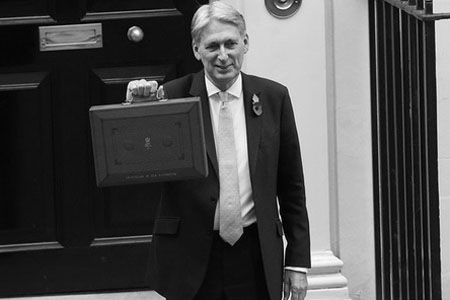News & Insight

Autumn budget 2018: HLaw bulletin
P
hilip Hammond, the Chancellor of the Exchequer, announced the Autumn Budget at Parliament on 29 October 2018. Our summary of the measures announced that are likely to have a bearing on the M&A and investment landscape is as follows.
Entrepreneurs’ Relief
Entrepreneurs’ Relief (“ER”) will be reformed in the following manner:
- For disposals on or after 6 April 2019, the period throughout which the qualifying conditions must be met for ER purposes will be increased from one to two years.
- For holders of enterprise management incentives (“EMI”) options, this means that, for disposals on or after 6 April 2019, ER will only be available where shares acquired on the exercise of EMI options are sold at least two years after the option grant.
- Further, ER will not apply where the company whose shares are under option ceased to be a trading company or a member of a trading group before 29 October 2018.
- For disposals of shares on or after 29 October 2018, the definition of what constitutes a “personal company” (which is relevant for individual shareholders other than those who acquire shares on the exercise of EMI options) has changed: in addition to the current requirements relating to share capital and voting rights, the individual must be beneficially entitled to at least:
- 5% of the company’s distributable profits; and
- 5% of its assets available for distribution to equity holders on a winding up.
EIS “knowledge intensive” approved fund
The Autumn Budget mentions the creation of a new EIS fund, namely the EIS “knowledge intensive” approved fund, with the purpose of improving the supply of capital to knowledge-intensive companies. It will be legislated for in the Finance Bill of 2019-2020 and will come into effect from 6 April 2020.
The main features of the new fund are as follows:
- at least 80% of the funds raised will need to be invested in “knowledge intensive” companies (within a period of two years);
- at least half of the funds will need to be invested within 12 months of the fund closing;
- uninvested funds will need to be held in cash; and
- the fund will be required to submit annual statement to HM Revenue and Customs (“HMRC”) in order to demonstrate that it continues to meet the criteria.
Digitalisation
The UK Government has been taking a number of steps towards the digitalisation of filing forms during the lifespan of a company (which you can read about here). The Autumn Budget announced that HMRC will now accept digital EIS1 certificate submissions and will also start issuing EIS2 and EIS3 certificates in a digital format.
Digital services tax
The Autumn Budget announced the “UK digital services tax”. According to Phillip Hammond, the threshold conditions for the new tax will be as follows:
- the company must be profitable (there will be a safe harbour provision that exempts loss-making businesses and reduces the effective rate of tax on businesses with a very low profit margin); and
- the company must have at least £500 million in global revenue.
The tax (at a rate of 2%) will apply to revenues generated from the provision of certain in-scope business activities, such as search engines, social media platforms and online marketplaces, where such revenues are linked to the participation of UK users, subject to a £25 million per annum allowance.
The tax will come into effect in April 2020. In the meantime, the government will consult on the detailed design of the new tax.
Corporation Tax – capital losses
The rules restricting the use of carried forward income losses by companies are to be extended to cover capital losses.
The £5 million allowance will apply to both income and capital losses from April 2020.
Research and development tax relief for small and medium-sized enterprises (SMEs)
Legislation will be introduced in the Finance Bill 2019 to restrict the amount of payable R&D tax credit that a qualifying loss-making SME company can receive in any tax year to three times the company’s total PAYE and NICs liability for that year. This measure will apply from 1 April 2020.
Taxation of intangible fixed assets
Following consultation, the UK Government has announced two welcome reforms to the taxation of intangible fixed assets:
- A targeted relief for the cost of goodwill (the amount paid for a business that exceeds the fair value of its individual assets) will be introduced with effect from April 2019.
- The degrouping charge rules for intangible property (which may apply when a group sells a company that owns intangibles) will be amended to be more closely aligned with the substantial shareholding exemption rules in the context of corporation tax on chargeable gains. This measure will have effect from 7 November 2018.
CGT – principal private residence relief
The final exemption period (in relation to private residence relief) has been reduced from 18 months to 9 months.
This change will come into effect from April 2020.
* Please note that this bulletin highlights some specific points of the 2018 Budget, without aiming for completeness. It does not constitute legal advice and should not be relied upon as such. Please contact Humphreys Law with any questions or for further information at enquiries@humphreys.law.
Humphreys Law

If you would like to contact a member of our team, please get in touch by filling in the form below.
"*" indicates required fields
Humphreys Law